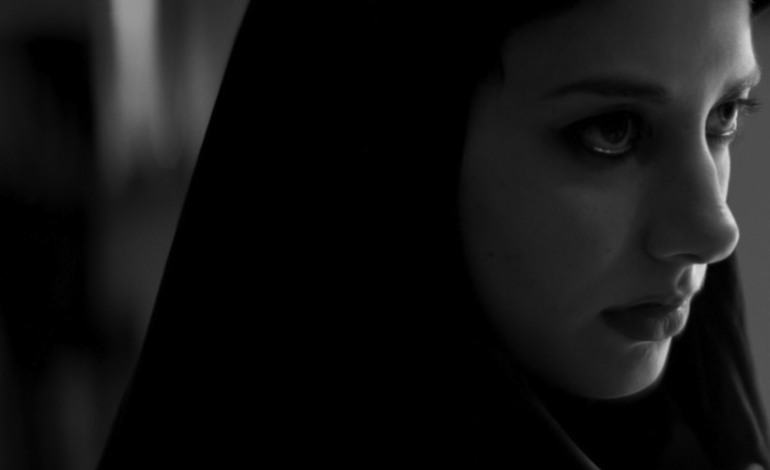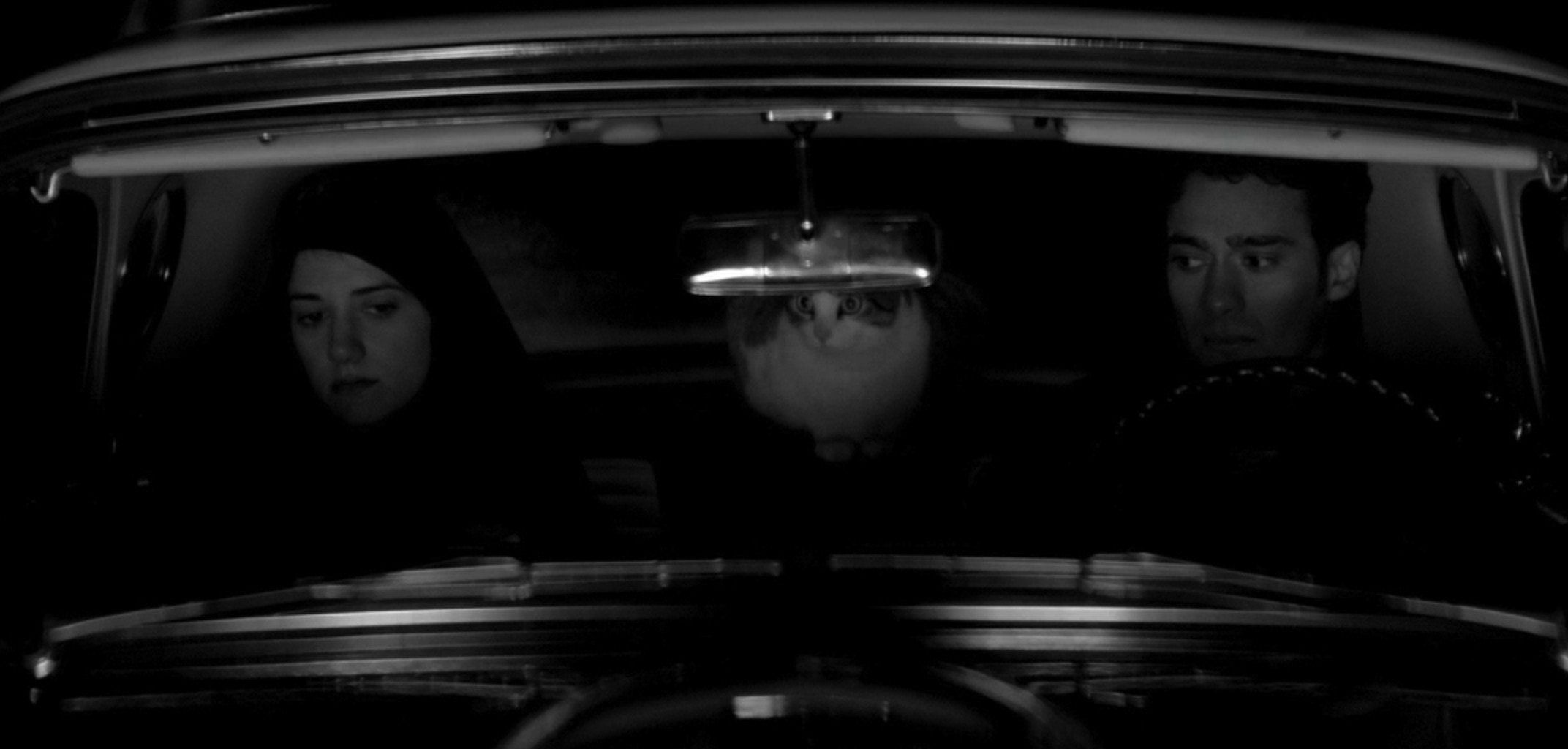

The experience of one’s own gender is unique in respect to an individual’s greater circumstances, but many events are commonplace among the experiences within certain gender binaries as well. One of the most common experiences we face that’s heavily gendered is walking home alone at night. For girls and women everywhere, walking home alone at night is an experience that is vulnerable and unpredictable. Ana Lily Amirpour’s vampire western film A Girl Walks Home Alone At Night (2014) plays with this very experience, commenting on the power of the voyeuristic gaze with a quietly powerful antihero (Sheila Vand) that steals the show.
Set in the sin-filled town of Bad City, A Girl Walks Home Alone At Night follows a young unnamed vampire woman who lurks among the streets, preying on bad men doing bad things. The film establishes Bad City as an environment of ill morality and difficult circumstances. We’re introduced to a child in disheveled clothing, an older man shooting up heroin, and a threatening gangster who is owed some big money against a relatively dull suburban landscape
Our protagonist, an unnamed vampire referred to as “The Girl,” walks alone at night dressed in a chador, an emblem of her feminine identity that also fades her into the dark shadows made especially striking in the film’s black and white imagery. The Girl is our quintessential anti-hero. She kills the bad guys of Bad City, preying on them from afar until she can suck their blood dead. Her first victim is a local gangster, Saeed (Dominic Rains) who is shown to be among those who ruthlessly take advantage of others for his own personal gain. As Saeed walks home alone at night after a rough night of business, she sees him. She quietly follows him like a predator stalking her prey. When Saeed realizes he’s being followed, he takes it as an invitation and brings The Girl over to his house. As he attempts to show off his lavish pad, The Girl just stands in the corner and silently observes him. She adopts the voyeuristic lens of a predator quietly watching, creating a uniquely exposed and vulnerable feeling that is commonly felt as we walk alone at night. Her quiet nature along with the steady beats of the background techno music add a swollen tension to the scene as Saeed approaches her. We can’t help but feel relieved when she finally bites off his finger and avenges those he hurt and wronged.


Arash is the story’s good boy, an antithesis of the rest of the men we come across in the film. He works hard to keep himself afloat without taking advantage of others. He seems successful, he worked hard for a nice new car, he takes care of his addict father and remains respectful when working in a young woman’s bedroom. He doesn’t try to cheat people or take advantage of a situation. His relationship to The Girl is established in quite an ironic fashion. The two bump into each other walking home alone at night. The Girl is dressed in her chador and Arash is dressed up as Dracula. The girl, a real vampire, stands face to face with a man pretending to be a vampire for fun. The roles are reversed in this sequence as The Girl is identified as the real threat on the street, more capable of harming the more vulnerable intoxicated dressed-up man in front of her. Seeing he’s not a threat, she disarms herself by removing her chador and embraces him. Instead of finding relief in having her kill her prey like with Saeed, we find relief that these two people found each other.
Arash’s father, Hossein (Marshall Manesh) is a lonely heroin addict who lives with his cat under the financial care of his son. The Girl follows Hossein after witnessing him harass a local prostitute, Atti (Mozhan Marnò). In a sequence that directly parallels her presence with his, we watch her follow him from across the street, mirroring his every move. We sense Hossein’s anxiety growing as he realizes the girl is mimicking him. As he walks home alone at night, he feels preyed upon, he is watched and visually exploited by the voyeurist across the street, and he gets so scared he runs (relatable). Hossein is a character that doesn’t like to be watched or observed, especially by women. This is made especially clear in a sequence with his cat (Masuka the Cat). Hossein asks the cat repeatedly “Did you come here to watch me?” The cat’s silent gaze tortures him. He approaches family photos of who is presumably his absent wife, which is a presence we could argue that he projects onto his female cat.
Bad City is a city of hard-working greedy hustlers and the vulnerable they exploit. Among the hard workers, the gangsters, and the addicts is Atti. She, like Arash, stands out from the rest of Bad City society. We see how she is treated by Saeed, we see her harassed by Hossein, but overall, we see her try to do what she can to stay afloat. The Girl, in her hours of surveillance, sees this in Atti and sees her as an ally, a fellow girl walking home alone at night. After being attacked by Hossein, The Girl saves Atti by killing Hossein. The Girl, Atti, and the Cat develop their own silent feminine bond within that moment with the Girl as their anti-hero.


Wrapped up, A Girl Walks Home Alone At Night is a film that feels like a longing for decency in humanity. As The Girl and Arash drive off in the last shot of the film, we encourage them to run away from Bad City and run towards somewhere good, somewhere people like them could belong.
